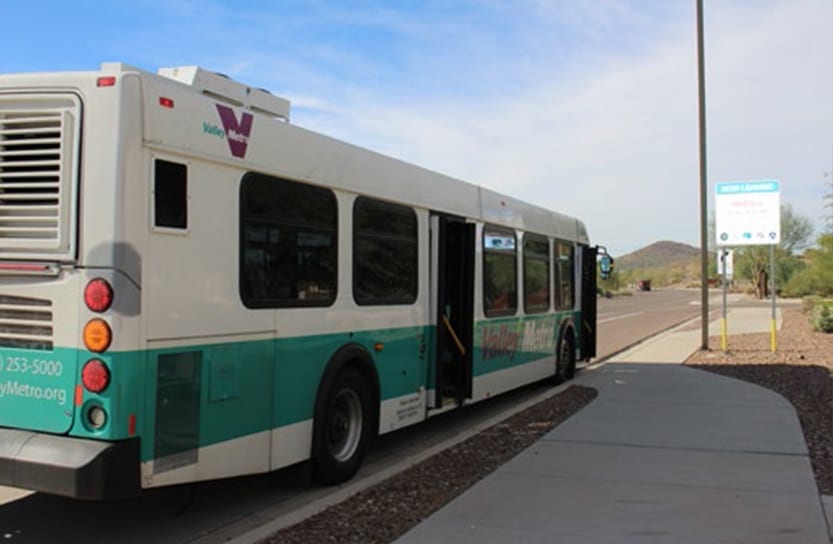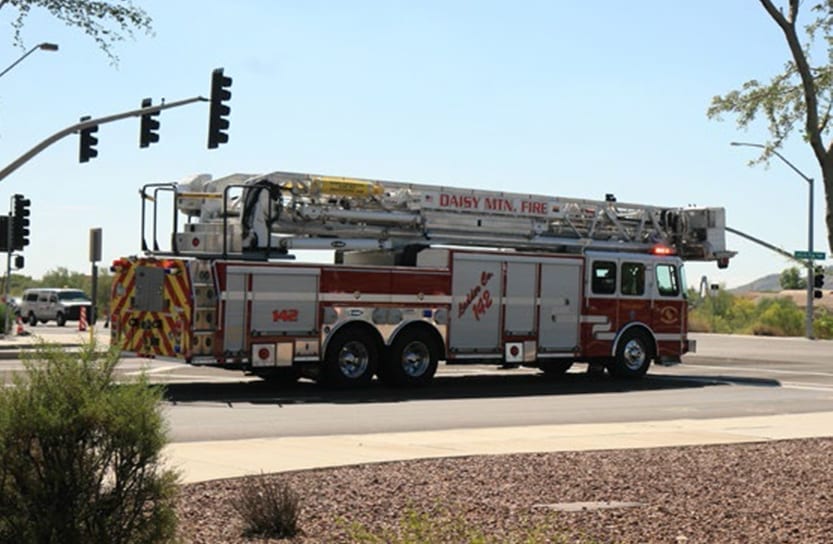The Maricopa County Department of Transportation (MCDOT) is helping to change the way the Phoenix Metropolitan area travels. We are continuously looking for ways to provide the connections that improve peoples’ lives. To accomplish that, MCDOT:
- Plans for the future
- Designs a seamless transportation system
- Builds a connected community
- Maintains the county’s transportation assets
- Operates transportation systems to reduce your travel time
MCDOT uses intelligent transportation systems to reduce commutes and connect vehicles to traffic signals to improve safety. We also believe in innovative government by creating partnerships with other public and private entities to maximize our infrastructure investments.

Jennifer Toth, MCDOT Director and County Engineer, speaking about the future of transportation with connected vehicle technology
Innovation Story
Just a Quick Note:
InnovationsOfTheWorld.com has partnered with Trade License Zone (TLZ) to support global innovators looking to expand internationally. Take advantage of the UAE’s Free Zones—enjoy streamlined setup, low corporate taxes, and a strategic gateway to the Middle East and beyond.
Get Your UAE Free Zone License Fast & Easy!In Arizona, there is a vehicle collision every four minutes and roughly every four days one of those collisions involves a fire truck or ambulance. What if fire trucks and ambulances could talk to traffic signals to reduce vehicle collisions? And, what if cars could talk to traffic signals to get you home from work faster? Today, we know that this technology is not only possible, but that it exists in the Phoenix metropolitan area. But a little more than 10 years ago, it was just an idea. This idea is what brought the teams from the Maricopa County Department of Transportation (MCDOT), the University of Arizona (U of A), the Arizona Department of Transportation (ADOT) and the Federal Highway Administration (FHWA) together to form the Arizona Connected Vehicle Coalition. This coalition led the effort to develop, research, test and launch technology at the connected vehicle testbed in Anthem, Arizona. This testbed and the associated technology now form what is known as MCDOT’s SMARTDrive ProgramSM. A program that leads the nation in the development of connected vehicle technology.

Preliminary tests indicate bus travel times can be decreased by 15 percent while using connected vehicle technology

Daisy Mountain Fire Department participates in a connected vehicle demonstration

Team members monitor traffic signal and connected vehicle data
The world as we have created it is a process of our thinking. It cannot be changed without changing our thinking.
– Albert Einstein
“The opportunities for improved safety and mobility are endless using connected vehicle technology”, said Jennifer Toth, MCDOT’s Director and County Engineer. “Based upon the principles of vehicle prioritization, connected vehicle technology assigns a priority ranking to vehicles to improve safety and traffic flow. This priority is communicated between vehicles and traffic signals via wireless radios.
“Imagine an ambulance and a fire truck arriving at an intersection at the same time. Who has the right of way? With connected vehicle technology, a priority is assigned to each vehicle and communicated to them reducing the possibility of a collision. As we enter a time when both automated and traditional vehicles will be sharing the same roads, connected vehicle technology provides a common language for all to communicate with the roadway infrastructure.”
“And we have expanded this technology to other aspects of transportation,” said Faisal Saleem, MCDOT’s SMARTDrive ProgramSM Manager. “For example, we have created a smartphone app to help pedestrians request more time at crosswalks and are developing technology to provide construction zone information to freight trucks. We will be testing the freight truck application in 2019.”

Dedicated Short Range Communications (DSRC) Radio Unit installed on an intersection luminaire
This technology will also be incorporated into an upcoming valley-wide project to improve traffic flow along Loop 101. The Loop 101 Mobility Project, led by ADOT and MCDOT, will be made possible by an FHWA grant aimed at developing technology to decrease congestion and improve safety in the Phoenix metro area.
MCDOT’s connected vehicle experts have shared how connected vehicle technology can transform traffic operations across the world. Additionally, transportation leaders have traveled to our testbed to experience this revolutionary technology in action. Recent visitors from the Universal Traffic Management Systems Society of Japan and the National Police Agency of Japan marveled at the capability of this technology and how it “has great potential to contribute to the future mobility (of all traffic).”
MCDOT’s SMARTDrive ProgramSM provides an opportunity to test connected vehicle innovations in a real-world microcosm, leading to fewer vehicle crashes. According to USDOT projections, connected vehicle technology has the potential to reduce crashes by 80% when drivers are not impaired. Imagine a world disrupted by safety. With this innovation, it is possible.

SMARTDrive ProgramSM Test Bed in Anthem, Arizona
Why Phoenix?
Maricopa County, where Phoenix is located, is currently the fastest-growing county in the nation and with good reason! The weather is fantastic, the transportation system is strong, and the business environment is friendly. Additionally, government and businesses alike value collaboration and innovation, making Maricopa County attractive for businesses.
Advice & Best Practices
1. Build partnerships to collaborate – more people can bring more ideas
2. Adopt a start-up mentality – Brainstorm, Research, Develop, Test, Evaluate, Launch, Repeat
3. Take risks – You miss 100% of the opportunities you do not take















